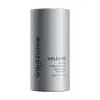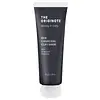What's inside
What's inside
 Key Ingredients
Key Ingredients

 Benefits
Benefits

 Concerns
Concerns

 Ingredients Side-by-side
Ingredients Side-by-side

Water
Skin ConditioningGlycerin
HumectantVolcanic Soil
Skin ConditioningButylene Glycol
HumectantCI 77891
Cosmetic ColorantSodium Palmitate
CleansingKaolin
AbrasiveMica
Cosmetic ColorantCharcoal Powder
AbrasiveCI 77499
Cosmetic ColorantCapryloyl Salicylic Acid
ExfoliatingLactobionic Acid
BufferingMandelic Acid
AntimicrobialBeta-Glucan
Skin ConditioningJojoba Wax PEG-120 Esters
PEG-40 Hydrogenated Castor Oil
EmulsifyingAroma
Methyl Lactate
PerfumingVerbascum Thapsus Extract
Skin ConditioningSaccharide Isomerate
HumectantRhamnose
HumectantPropylene Glycol
HumectantGlyceryl Acrylate/Acrylic Acid Copolymer
HumectantPvm/Ma Copolymer
Emulsion StabilisingPhenoxyethanol
PreservativeCaprylyl Glycol
EmollientEthylhexylglycerin
Skin ConditioningWater, Glycerin, Volcanic Soil, Butylene Glycol, CI 77891, Sodium Palmitate, Kaolin, Mica, Charcoal Powder, CI 77499, Capryloyl Salicylic Acid, Lactobionic Acid, Mandelic Acid, Beta-Glucan, Jojoba Wax PEG-120 Esters, PEG-40 Hydrogenated Castor Oil, Aroma, Methyl Lactate, Verbascum Thapsus Extract, Saccharide Isomerate, Rhamnose, Propylene Glycol, Glyceryl Acrylate/Acrylic Acid Copolymer, Pvm/Ma Copolymer, Phenoxyethanol, Caprylyl Glycol, Ethylhexylglycerin
Water
Skin ConditioningKaolin
AbrasiveGlycerin
HumectantDiatomaceous Earth
AbrasiveCharcoal
AbrasiveCetearyl Alcohol
EmollientButylene Glycol
HumectantSodium Stearate
CleansingDimethicone
EmollientPEG-100 Stearate
Glyceryl Stearate
EmollientPhenoxyethanol
PreservativeGlycosyl Trehalose
Emulsion StabilisingHydrogenated Starch Hydrolysate
HumectantPanthenol
Skin ConditioningAmmonium Acryloyldimethyltaurate/Vp Copolymer
Cetearyl Glucoside
EmulsifyingSorbitan Olivate
EmulsifyingChlorphenesin
AntimicrobialEthylhexylglycerin
Skin ConditioningGlycyrrhiza Uralensis Root Extract
Skin ConditioningPortulaca Oleracea Flower/Leaf/Stem Extract
AntioxidantPaeonia Suffruticosa Extract
Skin ConditioningPaeonia Lactiflora Extract
AstringentXanthan Gum
EmulsifyingPropylene Glycol
HumectantSodium Hyaluronate
HumectantCaprylic/Capric Triglyceride
MaskingPropanediol
Solvent1,2-Hexanediol
Skin ConditioningHydrogenated Lecithin
EmulsifyingHexylene Glycol
EmulsifyingStearic Acid
CleansingCholesterol
EmollientSalicylic Acid
MaskingBetaine Salicylate
AntimicrobialGlycolic Acid
BufferingCeramide NP
Skin ConditioningNiacinamide
SmoothingSalix Alba Bark Extract
AstringentPropolis Extract
Skin ConditioningSaussurea Involucrata Extract
HumectantBisabolol
MaskingAlpha-Glucan Oligosaccharide
CleansingCalendula Officinalis Flower Extract
MaskingArtemisia Argyi Leaf Extract
Skin ConditioningCentella Asiatica Extract
CleansingHydroxyacetophenone
AntioxidantCaprylhydroxamic Acid
Polymnia Sonchifolia Root Juice
Skin ConditioningMaltodextrin
AbsorbentLactobacillus
Skin ConditioningWater, Kaolin, Glycerin, Diatomaceous Earth, Charcoal, Cetearyl Alcohol, Butylene Glycol, Sodium Stearate, Dimethicone, PEG-100 Stearate, Glyceryl Stearate, Phenoxyethanol, Glycosyl Trehalose, Hydrogenated Starch Hydrolysate, Panthenol, Ammonium Acryloyldimethyltaurate/Vp Copolymer, Cetearyl Glucoside, Sorbitan Olivate, Chlorphenesin, Ethylhexylglycerin, Glycyrrhiza Uralensis Root Extract, Portulaca Oleracea Flower/Leaf/Stem Extract, Paeonia Suffruticosa Extract, Paeonia Lactiflora Extract, Xanthan Gum, Propylene Glycol, Sodium Hyaluronate, Caprylic/Capric Triglyceride, Propanediol, 1,2-Hexanediol, Hydrogenated Lecithin, Hexylene Glycol, Stearic Acid, Cholesterol, Salicylic Acid, Betaine Salicylate, Glycolic Acid, Ceramide NP, Niacinamide, Salix Alba Bark Extract, Propolis Extract, Saussurea Involucrata Extract, Bisabolol, Alpha-Glucan Oligosaccharide, Calendula Officinalis Flower Extract, Artemisia Argyi Leaf Extract, Centella Asiatica Extract, Hydroxyacetophenone, Caprylhydroxamic Acid, Polymnia Sonchifolia Root Juice, Maltodextrin, Lactobacillus
Ingredients Explained
These ingredients are found in both products.
Ingredients higher up in an ingredient list are typically present in a larger amount.
Butylene Glycol (or BG) is used within cosmetic products for a few different reasons:
Overall, Butylene Glycol is a safe and well-rounded ingredient that works well with other ingredients.
Though this ingredient works well with most skin types, some people with sensitive skin may experience a reaction such as allergic rashes, closed comedones, or itchiness.
Learn more about Butylene GlycolEthylhexylglycerin (we can't pronounce this either) is commonly used as a preservative and skin softener. It is derived from glyceryl.
You might see Ethylhexylglycerin often paired with other preservatives such as phenoxyethanol. Ethylhexylglycerin has been found to increase the effectiveness of these other preservatives.
Glycerin is already naturally found in your skin. It helps moisturize and protect your skin.
A study from 2016 found glycerin to be more effective as a humectant than AHAs and hyaluronic acid.
As a humectant, it helps the skin stay hydrated by pulling moisture to your skin. The low molecular weight of glycerin allows it to pull moisture into the deeper layers of your skin.
Hydrated skin improves your skin barrier; Your skin barrier helps protect against irritants and bacteria.
Glycerin has also been found to have antimicrobial and antiviral properties. Due to these properties, glycerin is often used in wound and burn treatments.
In cosmetics, glycerin is usually derived from plants such as soybean or palm. However, it can also be sourced from animals, such as tallow or animal fat.
This ingredient is organic, colorless, odorless, and non-toxic.
Glycerin is the name for this ingredient in American English. British English uses Glycerol/Glycerine.
Learn more about GlycerinKaolin is a clay. It is used for oil control and to help minimize pores. Like other clays, kaolin has the ability to absorb excess sebum or oil. This can help clean out pores and mattify the skin.
Some types of kaolin may have exfoliating properties. When water is added to kaolin, it becomes a paste with small abrasive particles.
Most kaolin is a white color, but may be pink/orange/red depending on where it comes from.
The name 'kaolin' comes from a Chinese village named 'Gaoling'. Kaolin clay comes from rocks rich in kaolinite. Kaolinite, the mineral, has a silicate layered structure. Kaolinite is formed from chemical weathering of aluminum siilicate minerals.
Besides skincare, kaolin is commonly used to make glossy paper, in ceramics, toothpaste, and as medicine to soothe stomach issues.
Learn more about KaolinPhenoxyethanol is a preservative that has germicide, antimicrobial, and aromatic properties. Studies show that phenoxyethanol can prevent microbial growth. By itself, it has a scent that is similar to that of a rose.
It's often used in formulations along with Caprylyl Glycol to preserve the shelf life of products.
Propylene Glycol is an odorless, colorless liquid. As a humectant, it helps skin retain moisture. It also aids in delivering active ingredients.
Another role of this ingredient is preventing a product from melting or freezing. Propylene glycol also adds antimicrobrial properties to a product, elongating product lifespan.
This ingredient is considered an organic alcohol and commonly added into both cosmetics and foods.
Those with sensitive skin or conditions may develop a rash when using this ingredient.
Learn more about Propylene GlycolWater. It's the most common cosmetic ingredient of all. You'll usually see it at the top of ingredient lists, meaning that it makes up the largest part of the product.
So why is it so popular? Water most often acts as a solvent - this means that it helps dissolve other ingredients into the formulation.
You'll also recognize water as that liquid we all need to stay alive. If you see this, drink a glass of water. Stay hydrated!
Learn more about Water